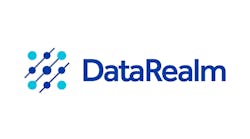The OMAC Packaging Workgroup Executive Committee approved PackML Version 3 at a meeting held in conjunction with Novembers PackExpo in Chicago.
PackML is a set of packaging-machine-language guidelines developed by the OMAC Packaging Workgroup. Packaging machines that follow the PackML guidelines are touted as more easily integrated into a packaging line and its associated manufacturing execution (MES) systems, thereby minimizing engineering costs and reducing project schedule durations.
PackML defines a standard state model for how a machine operates. Version 3 adds multiple-mode capability by defining a mode manager that can handle other modes (e.g., manual, semi-automatic, etc.). The previous version of PackML defined only the automatic mode. There also are changes to the states in the automatic mode that now better align with the ISA-88 state model used in the process/batch area. The Version 3 document also addresses the backward compatibility of Version 3 to the previous Version 2.2 of the PackML guidelines.
PackML V3 offers advantages in software and operational interoperability we have never had before, stated Mike Lamping, technology leader for Procter & Gamble and co-chair of PackML. As we strive for simplification and increased productivity, PackML V3 offers a solution that will meet our needs and provide the best investment.
A number of packaging machine builders have adopted the PackML guidelines and are implementing them in their designs. By the end of 2007, all ADCO controller and PC-based machines will be based on the OMAC standards, said ADCO Manufacturings Colin Warnes during the OMAC Packaging Workgroup General User Meeting. Well do this at no extra charge to the end user.
PackML V3 is posted on the OMAC Packaging Workgroup website and available for download.



